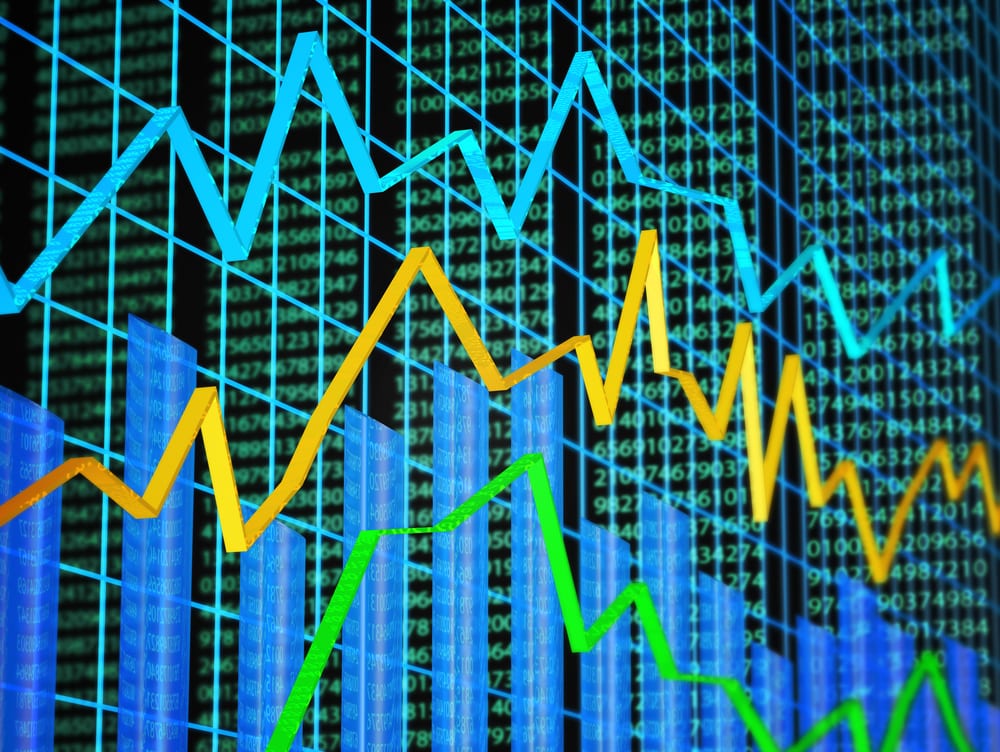Short-term stock prices merely reflect the prevailing trading on major secondary exchanges — not the intrinsic stock value These stock prices merely reflect the supply and demand for company shares.
Any change in these variables will cause price adjustments in order to clear the market until it achieves an equal number of buyers and sellers. For instance, if the supply of shares on the secondary market goes up because of a recession, the price will have to adjust downward to entice more buyers to step in and clear the market.
Long-term “demand” for stocks, is driven by expectations about the future value of a company’s dividends. In a totally rational world, receiving dividends in the future is the only reason to own shares, since an investment is only valuable if it returns cash in the future. Therefore, the price you should be willing to pay for a share of stock is the current value of its future dividend stream. This is known as a stock’s intrinsic value — the value that a person who planned to hold a stock literally forever would receive as a result of cashing dividend checks. But, how do we calculate the current value of future payments? And how do we even know the amount of future dividends the company will pay?
The time value of money
The time value of money concept might seem a bit strange, since $1 should always be worth $1 by definition. However, given the choice between receiving $1 now and $1 five years from now, most people would rationally prefer to receive the $1 now. There are two main reasons for this. One reason is that $1 today will probably buy you more things than $1 five years from now because of inflation. Another reason is that you could invest it and get back more than $1 five years from now — even if you put it in an ultra-safe investment like a CD (certificate of deposit).
We can imagine having to choose between a smaller amount of money today versus a larger amount five years from now. Offered a choice between 10 cents today and $1 five years from now, most people would take the $1 five years from now. There will be an amount — the current value of $1 – possibly between 75 and 90 cents –where you would be indifferent between receiving that smaller amount today and $1 five years from now. Using the same method, we can determine the current value of $1 at any point — one year, 10 years or 20 years into the future. This is precisely what we need to do to find the current value of an expected stream of dividends from a stock.
We can estimate time value of money by comparing a potential investment to an alternative risk-free asset like a government treasury bond. Imagine a hypothetical scenario where we are evaluating the value of a stock expected to pay a single dividend of $100 10 years from now and then go bankrupt. To determine the price we should pay for the stock today, we can look at the price of a zero-coupon U.S. Treasury bond. A zero-coupon treasury bond is effectively a loan to the U.S. government for 10 years. At the end of the loan, the government guarantees it will pay us back $100. If a 10-year $100 zero-coupon bond is currently selling for $80, then we should not be willing to pay more than $80 for the stock.
In fact, we might be willing to pay significantly less than $80 for risky stocks. All things being equal, we would much rather own the risk-free bond than a stock with a significant chance of no payback at all.
The ’Market Risk Premium’
Because of the discounted price, we should expect a higher return on risky stocks than risky bonds. Though a zero-coupon bond and our hypothetical dividend-paying stock are both expected to give us $100 10 years from now, we might be able to buy the stock at $60 and the bond at $80. Therefore, the bond would yield a 25% return and the stock would yield a 67% return on our initial investment. This works out to a 5.2% annualized return on the stock and a 2.3% annualized return on the bond. The difference between the returns of stocks and bonds — about 3% a year in this example — is known as the “market risk premium” — the additional expected return that investors demand for holding stocks instead of risk-free bonds.
Fair value of stocks could vary widely depending on market-risk premium changes, which is what makes determining fair “intrinsic value” of stocks so difficult. Market-risk premium can change during significant bear-market recessions. In those instances, investors may shift from demanding a premium of 1% or 2% a year to demanding a premium of 5% or 6% to feel comfortable holding stocks. This can have an enormous impact on stock prices, even without changes to the underlying business fundamentals
While varying considerably over time, the long-term market-risk premium for U.S. stocks is generally estimated to be around 6% per year. Some experts estimate that the important forward-looking risk premium may be only 3% or 4% today. We can estimate the forward-looking risk premium by comparing future returns of stocks to the 30-Year Treasury Yield. Equally, future returns for stocks can be estimated as a sum of dividend yield, growth rate in dividends and any expected dividend yield changes. Based on a 4% dividend growth rate over the past 20 years and a current dividend yield of 2.1%, we can expect stocks to return roughly 6% a year over the next decade. Comparing the expected return rate for stocks with the current 10-year treasury rate of 2% and the 30-year rate of around 3%, the current risk premium is between 3% and 4% a year.
———-

Billy Williams is a 25-year veteran trader and author. For a free strategy guide, “Fundamentals for the Aspiring Trader,” and to learn more about profitable trading, go to www.stockoptionsystem.com.



![[instant messaging via tablets and phones]](https://www.stockinvestor.com/wp-content/uploads/shutterstock_125411345.jpg)
